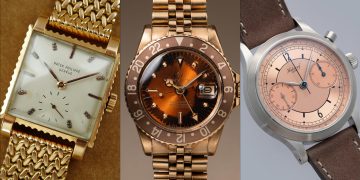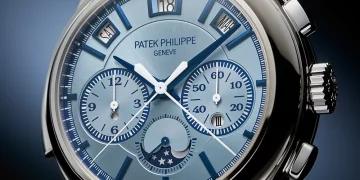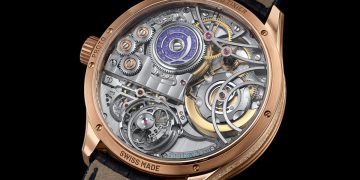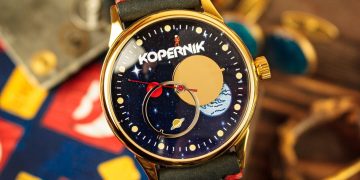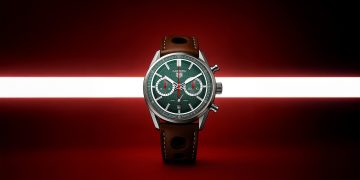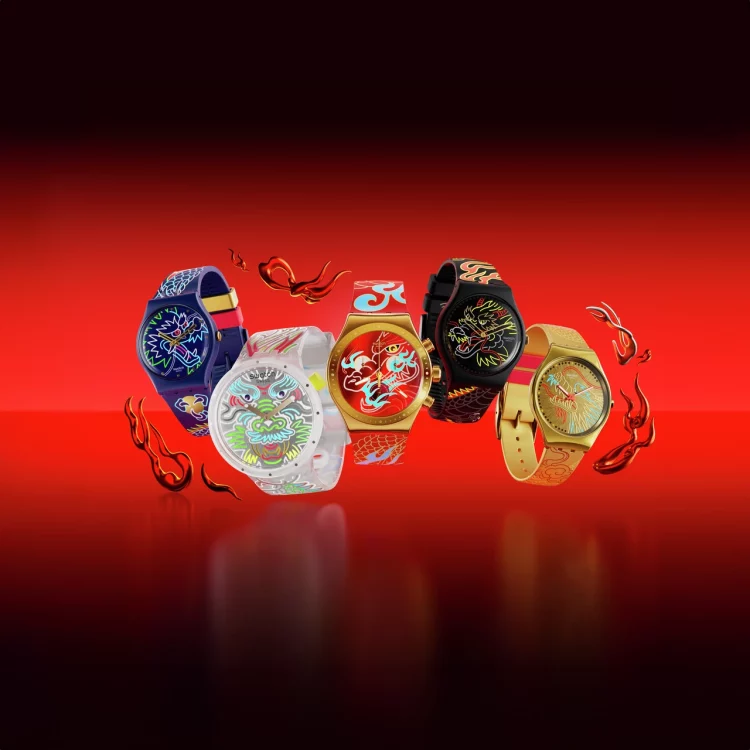When it comes to Swiss watchmaking, names like Rolex, Patek Philippe, and Audemars Piguet often come to mind as the crème de la crème of the horological world. Their craftsmanship, heritage, and influence are widely celebrated. However, there’s one luxury watch brand whose origins are surprisingly rooted in an entirely different industry—one that may raise eyebrows: Swatch.
Yes, Swatch, the brand synonymous with affordable, colorful plastic watches, has an intriguing origin story that begins not in the world of fine watchmaking but rather in the toy industry. How did a company that initially began making toys manage to transform into one of the most influential players in the global luxury watch industry? The fascinating tale of Swatch’s rise from humble beginnings to international recognition is not just about the evolution of a brand; it’s about how innovation, creativity, and a willingness to embrace change can redefine an entire industry.
In this article, we’ll explore the surprising origins of Swatch, discuss how the company pivoted from toys to horology, and examine how this shift fundamentally reshaped both its own legacy and the luxury watch market at large.
From Toy Maker to Watchmaker: The Humble Beginnings of Swatch
Swatch was born in 1983, but its roots trace back to the mid-20th century, to a small Swiss toy company called Swatch Group. Founded by Nicolas Hayek, a Swiss entrepreneur, the company began in the toy industry, creating inexpensive yet well-designed plastic toys. In the 1970s, Hayek’s company was struggling financially due to stiff competition from cheap, mass-produced toys coming from overseas, particularly from Asia.
However, it wasn’t until the late 1970s and early 1980s that the company made a dramatic shift. The Swiss watch industry, particularly the prestigious manufacturers known for their traditional mechanical timepieces, was facing an existential crisis. Japanese brands like Seiko and Casio, with their affordable quartz technology, were dominating the global market. The Swiss watch industry was losing ground rapidly, particularly in the mass-market segment, and many Swiss watchmakers were on the verge of collapse.
Hayek, seeing the opportunity to revitalize the Swiss watch industry, proposed a revolutionary idea. Instead of focusing on traditional mechanical watches, which were becoming increasingly irrelevant in the age of quartz technology, he envisioned creating a new breed of watches that would appeal to the masses: stylish, affordable, and innovative watches that could be produced in large quantities, using cutting-edge materials and designs. Hayek’s vision was bold, and it would soon lead to the creation of Swatch.
The Birth of Swatch: A New Vision for Watchmaking
In 1983, Hayek and his team launched Swatch with a mission to revolutionize the watch industry. The brand’s first collection of watches was unlike anything the world had seen before. Swatch watches were vibrant, colorful, and lightweight, crafted primarily from plastic. They were designed to be fun, fashionable, and accessible to people of all ages, especially younger generations. The introduction of the Swatch watch was a game-changer in the horological world because it took an entirely different approach than anything the Swiss had been known for.
In a sense, Swatch was creating a new kind of luxury. Traditional luxury watches were expensive, often made of precious metals and complex mechanical movements, and were generally designed for the upper echelons of society. Swatch, on the other hand, took the concept of a watch and democratized it—transforming it from a symbol of wealth and prestige into a symbol of personal expression and style, available to the masses.
But what made Swatch even more revolutionary was its ability to combine Swiss craftsmanship with Japanese-inspired quartz technology. This innovation allowed Swatch to mass-produce watches with great precision, yet at an affordable price. The Swatch movement was an essential part of the brand’s success, and it marked a dramatic shift in the industry. No longer did Swiss watchmaking have to be about exclusivity; it could also be about accessibility without sacrificing quality.

Swatch’s Impact on the Watch Industry: Redefining Luxury and Style
Swatch’s entry into the watch market did more than just provide an alternative to the traditional Swiss watchmakers—it completely redefined what luxury could be. Before Swatch, the notion of a luxury watch was rooted in its intricate craftsmanship, rare materials, and high price tags. Swatch, however, made high-quality, precision watches accessible at an affordable price point, which democratized the luxury watch market.
The Swatch watch was not just about telling time—it was a fashion statement. The brand brought a fresh and youthful approach to watchmaking, making watches fun and wearable accessories rather than mere timepieces. As Swatch began releasing more and more designs in the 1980s and 1990s, it became a symbol of youth culture and personal expression. It was no longer about simply owning a timepiece; it was about showing off your personality, style, and individuality.
Swatch’s approach was innovative in another important way: it helped pave the way for other watchmakers to embrace design-forward thinking. Before Swatch, the majority of Swiss watchmakers focused solely on technical precision, often ignoring style in favor of function. Swatch, however, proved that watches could be both stylish and functional, which set a trend that many Swiss luxury brands began to follow in the years to come.
The Swatch Group: Diversification and Expanding Horizons
Swatch’s success was not limited to the mass-market segment alone. In the years following its launch, the Swatch Group expanded its portfolio by acquiring other prominent Swiss watch brands, such as Omega, Breguet, Longines, and Tissot. This diversification allowed Swatch to cater to both the entry-level and high-end segments of the market, giving it a commanding presence in nearly every price category.
Through its acquisitions, the Swatch Group was able to retain its reputation for innovation while also preserving the legacy of these prestigious Swiss brands. Omega, for example, became known for its connection to NASA’s space missions and the iconic Omega Speedmaster, while Breguet continued to uphold the finest traditions of Swiss watchmaking. Swatch’s ability to merge modern design sensibilities with traditional craftsmanship allowed it to create a unique synergy between the brands it acquired.
As the Swatch Group expanded its operations, it also became a leader in watch technology and manufacturing, especially in the realm of quartz movements and ceramic materials. By producing watches with high-tech materials, Swatch was able to offer customers even more durability, precision, and style. Over time, the Swatch Group’s reputation for quality, craftsmanship, and innovation helped solidify its position as one of the most important players in the watch industry.
Swatch’s Influence on Luxury Watchmaking: A Lasting Legacy
Swatch’s success had a profound impact on the luxury watchmaking industry, influencing brands far beyond its own immediate portfolio. The company demonstrated that affordable, high-quality watches could be made without sacrificing design or function, which inspired many other companies to embrace a similar approach. Swatch’s influence also extended to the way watches were marketed, with its colorful, youthful designs appealing to younger consumers and establishing a new segment in the market for stylish, affordable luxury watches.
Moreover, Swatch’s ability to bridge the gap between mass-market and luxury watchmaking was a significant achievement. While many high-end watchmakers initially dismissed Swatch as a “fad,” the brand’s lasting success and influence proved that a fresh approach to design and marketing could revolutionize an entire industry. Swatch’s ability to expand beyond its own brand and influence the broader watchmaking world showed that innovation, even in a traditional industry like horology, could lead to success.
The Swatch Revolution: Luxury Watches for the Masses
Swatch’s transformation from a toy company to a luxury watchmaker is nothing short of remarkable. It was a revolution in the world of horology, a story of how a company was able to take bold risks and redefine the luxury watch market. Swatch showed that luxury was not just about exclusivity; it was also about accessibility, style, and self-expression. The brand’s ability to offer precision, affordability, and style has made it a beloved choice for people of all ages, and its influence on the global watch market is still felt today.
Conclusion: The Power of Innovation and Reinvention
Swatch’s journey from a toy manufacturer to a global luxury watch brand is a testament to the power of innovation and reinvention. The brand’s ability to pivot from toys to watches in the 1980s and its ability to embrace both modern design and traditional Swiss watchmaking techniques revolutionized the watch industry. Swatch proved that a company could take an unconventional path, experiment with bold ideas, and still succeed in creating a lasting legacy in a centuries-old industry.
By democratizing luxury and rethinking what a watch could be, Swatch didn’t just create a new brand; it changed the way we think about timepieces. Today, Swatch continues to be a symbol of youthful innovation, fun, and personal style—a true pioneer in the world of horology.









